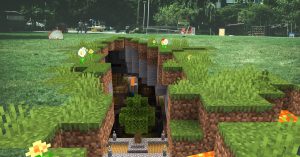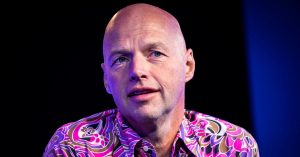The European Union aims to reduce carbon emissions by at least 80 percent by 2050. Former California Governor Jerry Brown signed an executive order last year calling for the state, the fifth-largest economy in the world, to go carbon neutral by 2045. Meeting these goals, or even the less ambitious goals set by other governments, will require utilities to buy more energy from sustainable sources like wind and solar power. That shift is already creating logistical challenges for utilities. Unlike more predictable sources of energy, the energy produced by a wind farm can vary from day to day, forcing utilities to offload excess supplies and make up for shortages. The solar panels on residential rooftops that feed into the grid pose their own challenges because the grid wasn’t designed to facilitate a two-way flow of energy.
To meet those technological challenges, the energy sector is turning to open source software. Open source, which anyone can modify or share, helped power the rise of internet giants like Google, Facebook, and Amazon. Ostensible competitors worked together to develop software like the data-crunching platform Hadoop because it enabled them to solve difficult computing problems. Now all sorts of companies, ranging from Microsoft to Walmart to JP Morgan Chase use and make open source software.
But the energy industry has lagged behind others in using and creating open source software, says Loek Bakker, head of information management at Dutch energy distribution company TenneT. “The energy industry isn’t known for being innovative,” he says. “I think we’re quite a traditional industry.”
Arjan R. Stam, the director of network management at Alliander, another Dutch energy company, agrees. “As utilities we don’t cooperate much, we don’t have the pleasure of sharing information with each other.”
That’s changing. TenneT recently built its own data collection and analysis platform atop open source components because, Bakker says, the company couldn’t find a traditional commercial software product that met its needs. TenneT’s platform compiles all the data the company produces, such as energy usage data, along with weather data that can be used to predict both energy production and demand. Windy, sunny days mean more energy production from wind and solar, while exceptionally hot or cold days will lead to more consumption. TenneT hasn’t released its work as open source yet, though Bakker says it plans to do so. TenneT also plans to sponsor open source projects starting next year.
The sort of data crunching TenneT is doing might sound straightforward. But Bakker says the need to integrate different types of software and data is a big challenge. Stam says there’s a big need for open standards that enable communication among the various tools that energy producers and utility companies use. For example, many power stations have replaced physical devices to monitor electrical current with software-based monitoring systems that need to be integrated with other control systems.
“Nowadays it takes a long time to bring a new station online,” Stam says, in large part because of the need to integrate the various technologies in a power station with the existing infrastructure. New code has to be written to get parts to talk with one another. If the components all used a set of common standards, the amount of work required to add those components to a grid could be slashed dramatically.
Frustrations over a lack of compatibility between products led Alliander to create the Open Smart Grid Platform, an open source software system for integrating and controlling a variety of energy and industrial products. It’s currently in use in Amsterdam to control street lights.
Alliander is now in the process of transferring control of the Open Smart Grid Platform to LF Energy, a Linux Foundation umbrella organization that includes Alliander, TenneT, and other energy companies working with open source software and standards. The energy industry is essentially following the example of the tech industry in using open source foundations as a type of standards body. Instead of specifying how to build a product, open source software provides a foundation that anyone can build atop—and a platform with which any company can integrate their products. “By building open source software, we can define standards that are built into the code,” Stam says.
Another LF Energy project focuses on open standards that can’t be defined through open source software alone. The OpenEEmeter project, created by the software startup Recurve and now stewarded by LF Energy, attempts to create standard measures of energy savings. It’s another example of something that seems like it should be simple, but it isn’t. For example, calculating the savings from replacing windows in an office building isn’t simply a matter of comparing a month or even a year’s worth of energy use with the new windows to the amount of energy used before. You also need to take into account other factors, such as the weather during the time period you’re measuring, says Peter Capuciati, a commercial real estate veteran and founder of Bluon, a company that makes what it says is an efficient and environmentally friendly replacement for Freon. Two consultants could produce very different energy savings estimates for the same project, depending on the metrics they used.
Recurve sells a software service that measures energy savings. CEO Matt Golden explains that the company needed to make its metrics for measuring those savings as open and transparent as possible because many utility companies offer incentives for companies or individuals who invest in energy saving projects. Everyone involved needs to be able to see exactly what Recurve is measuring and how. So the company released both its metrics and a software engine for applying those metrics. The hope is that people will at least agree on how to keep score, and improve the scorekeeping over time.
More Great WIRED Stories
- Inside Pioneer: May the best Silicon Valley hustler win
- Netflix, save yourself and give me something random to watch
- Tesla’s “Smart Summon” will fetch your car—sometimes
- How amateur video is helping us understand deadly tsunamis
- An end to pornography, sophistry, and panty raids
- 👁 Prepare for the deepfake era of video; plus, check out the latest news on AI
- 📱 Torn between the latest phones? Never fear—check out our iPhone buying guide and favorite Android phones



